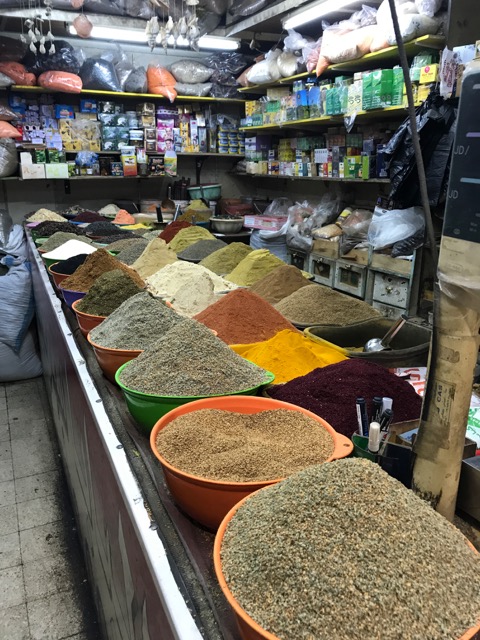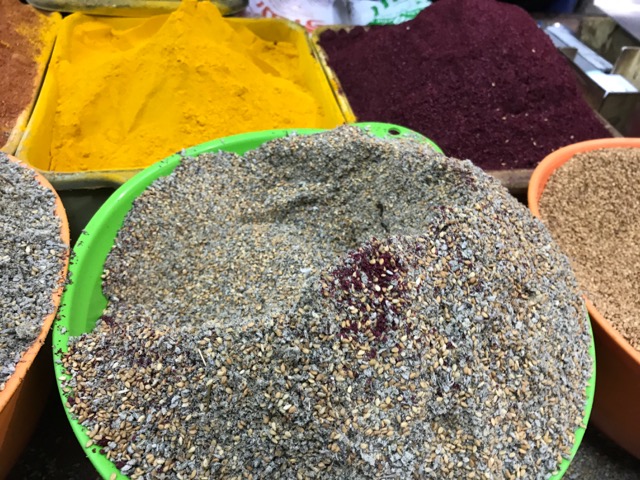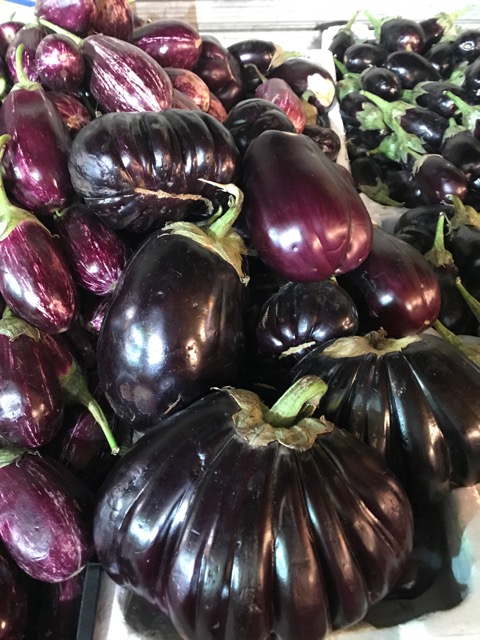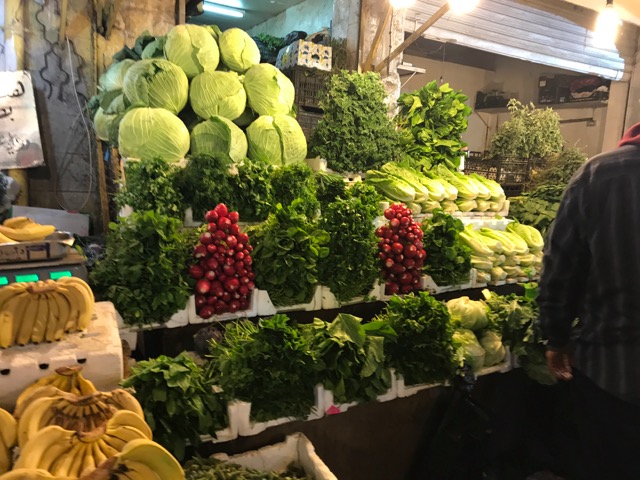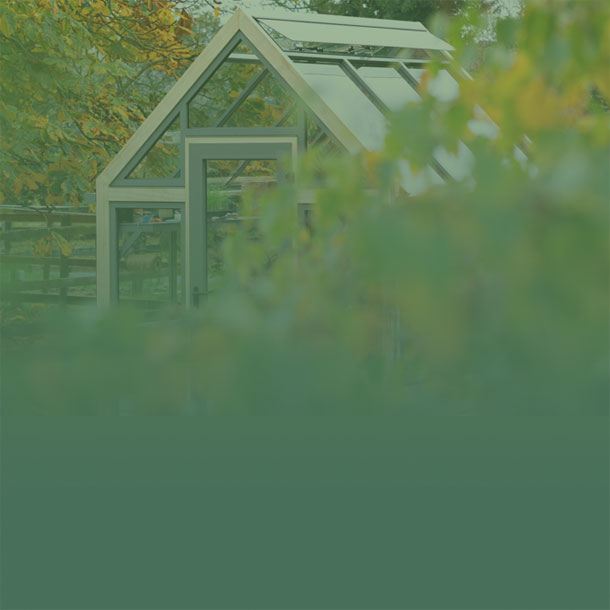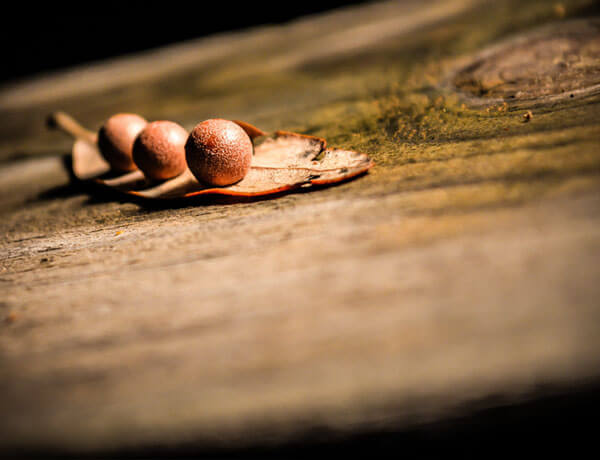-
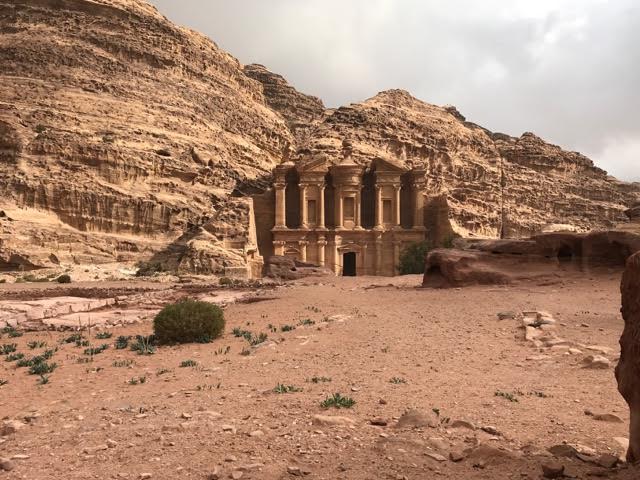
Jordan – Magnificent Ruins – and a Few Flowers
15th December 2017 • Places to Visit • Stephanie Donaldson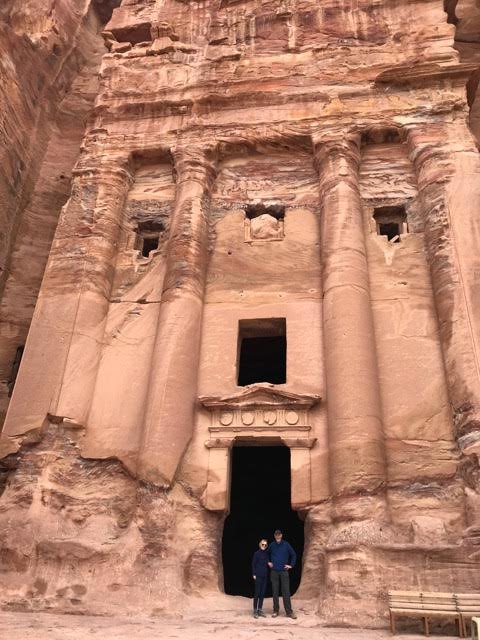
Just occasionally we do take a holiday that doesn’t have plants as the main focus and December in the desert kingdom of Jordan was never going to be a floral bonanza. Nevertheless it was an unforgettable week that more than made up for it being the off-season for most flowering plants. Visitor numbers are low because of nervousness about the region, so we were made very welcome, never felt unsafe and it was wonderful to see some of the wonders of the Old World without the usual crowds.
Jerash & Ajlun
The Graeco-Roman city of Jerash was at its finest two thousand years ago, but thanks to the dry climate and having been hidden beneath layers of sand until the 20th century, it is in an amazing state of preservation (with some restoration) and exists to one side of the modern town. It is a huge site that includes two amphitheatres, a vast temple, hippodrome, forum and colonnaded street – and once we were off the main path there were few people around.
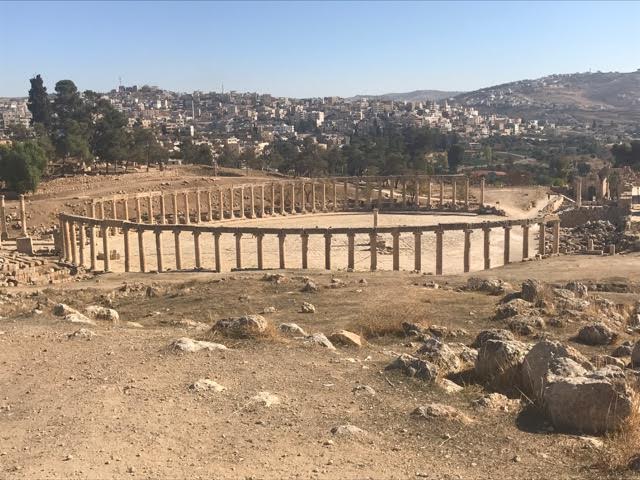

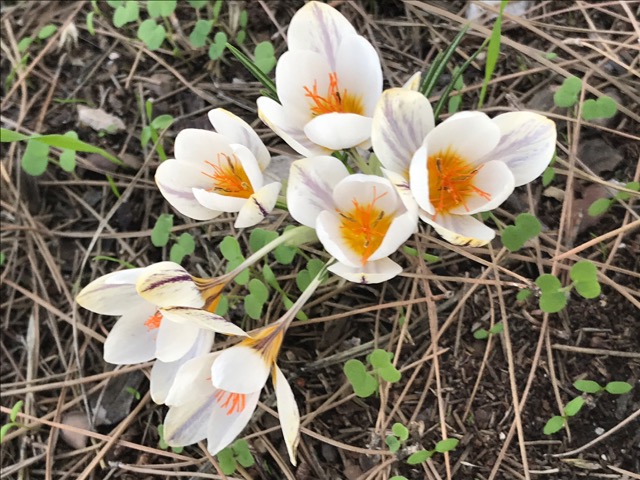
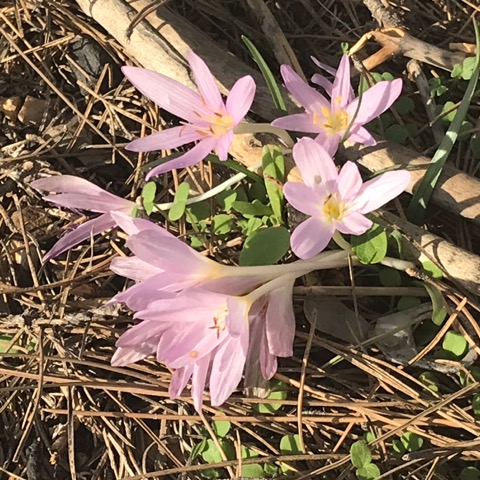
I did manage to spot a flower that was new to me – Hyoscyamus aureus – the golden-flowered henbane. And I also noticed that much of the ground was carpeted with the remains of the eryngiums and asphodels that bloom there in the spring. Aside from that, there was no shortage of finely carved acanthus leaves on the stone capitols and columns.
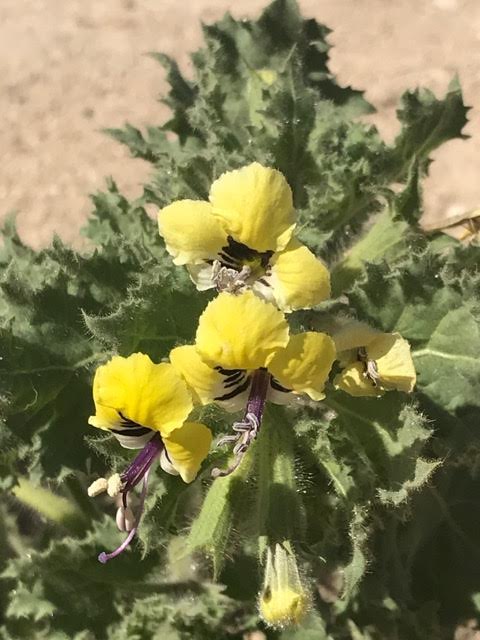
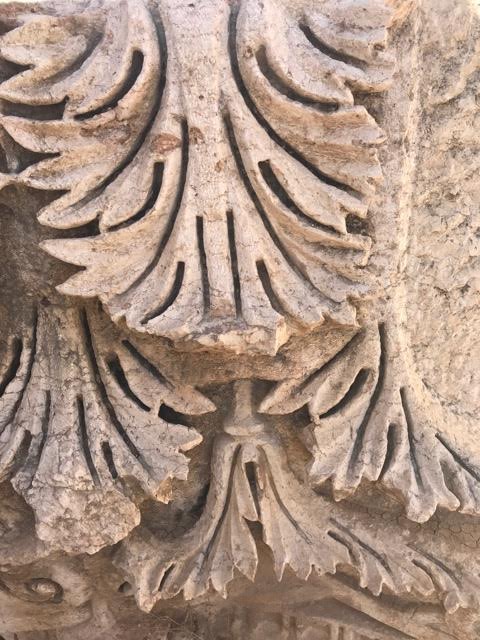
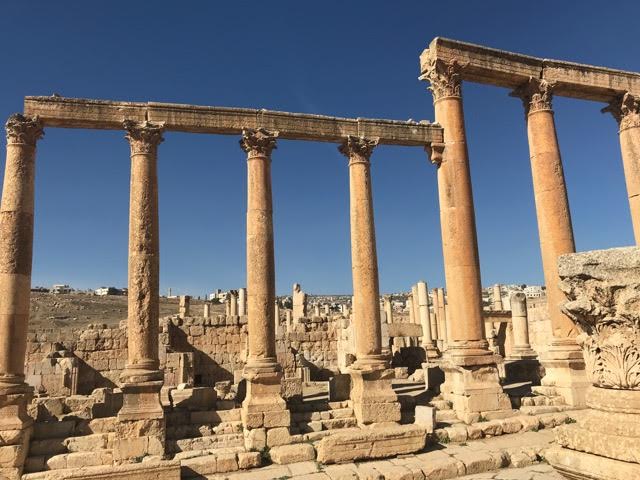

Nearby Ajlun was very different – a hilltop fortress built by one of Saladin’s commanders in the 12th century to repel the Crusaders. It is forbidding and impressive and like most of the places we visited provided very good information boards, so we got a real sense of how it was used to attack and repel the enemy – huge stone balls fired from catapults and openings for boiling oil featured strongly.
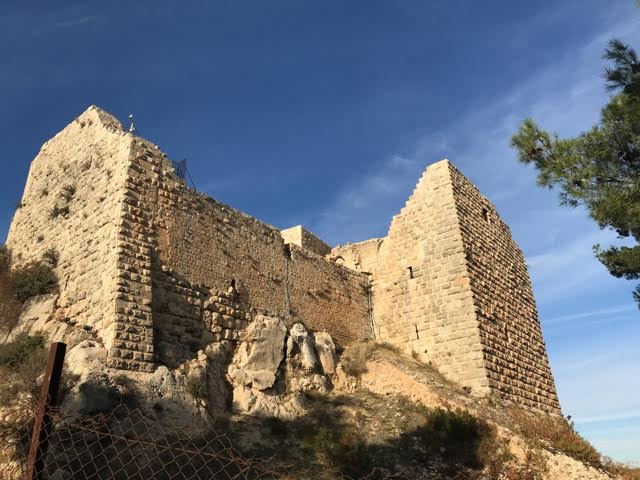
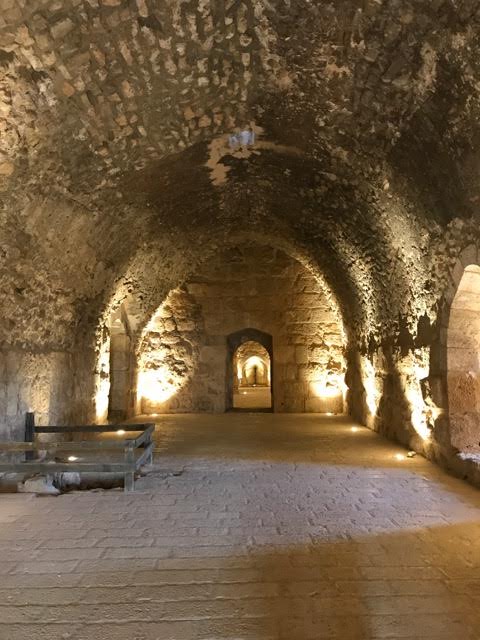
Leaving the military architecture behind we took a stroll off the main path and around the perimeter of the fortress to be rewarded with a slope carpeted in tiny lavender-pink colchicums and then a scattering of the rare white Aleppo crocus. Having identified it, I also discovered that the roasted bulbs are a delicacy amongst the local people which probably accounts for its rarity.
Mount Nebo
On the way to Petra, we stopped off at Mount Nebo where Moses is said to have first looked upon the ‘Promised Land’. It was a hazy day so we couldn’t see as far as Jericho and Jerusalem, but even so the views were spectacular.
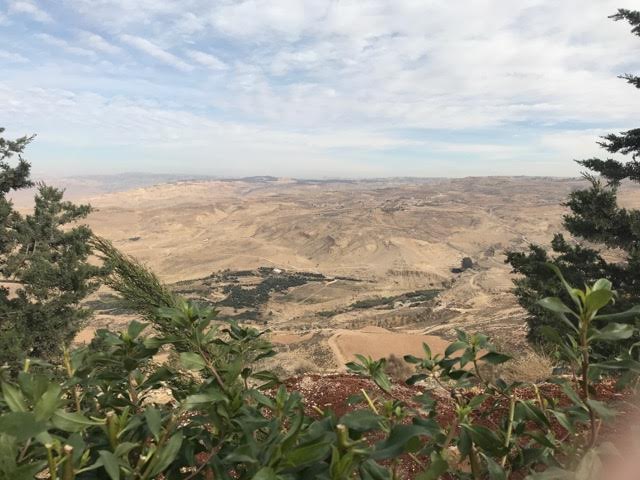
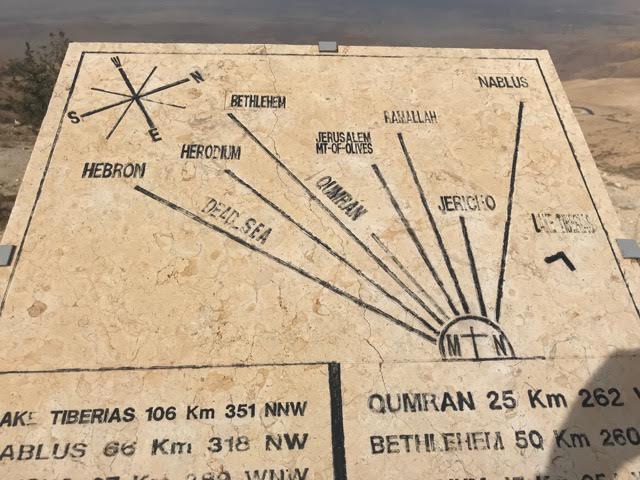
The Franciscan monastery on the summit contains some stunning Byzantine mosaics in fine condition featuring a wonderful array of animals, people and some well-pruned trees!
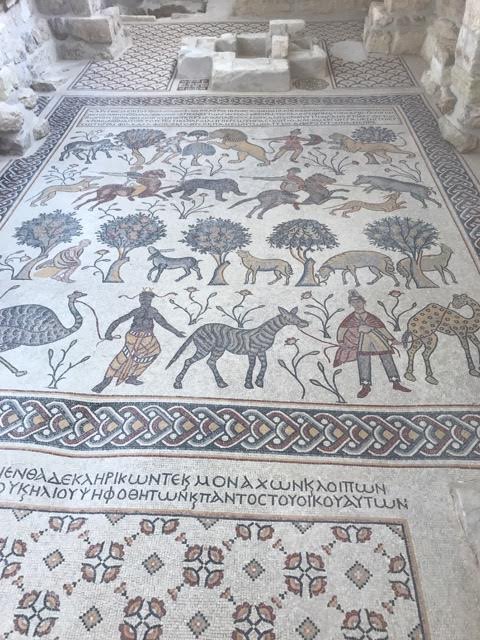
A modern crucifix stands at the highest point, overlooking the Jordan Valley – I would like to have included the view in the photo, but there was an entire coachload of Chinese tourists queuing to take selfies, so I gave up.

Petra

Looking down on the landscape that conceals Petra
This extraordinary place was without doubt the highlight of our visit to Jordan. We watched the weather forecast with concern – it appeared that our visit would coincide with the first rain of the winter – but as luck would have it, it held off until the evening, so although it remained overcast and at times threatening, it actually meant that we walked much further than we might have if it had been hot and sunny. To get ahead of the weather and any crowds, we got there early (our hotel was right next to the entrance) so we were the only people in sight at 6.50am.

It’s a two kilometre walk from the entrance, along a valley and then through the Siq (the narrow gorge that leads to Petra) before you reach Petra itself, built as the capital of the Nabataean Kingdom in the 1st century BC. For seven hundred years, after a major earthquake and a change in trade routes, it was known only to the Bedouins until an explorer (masquerading as an Arab) gained entry in the early 19th century.
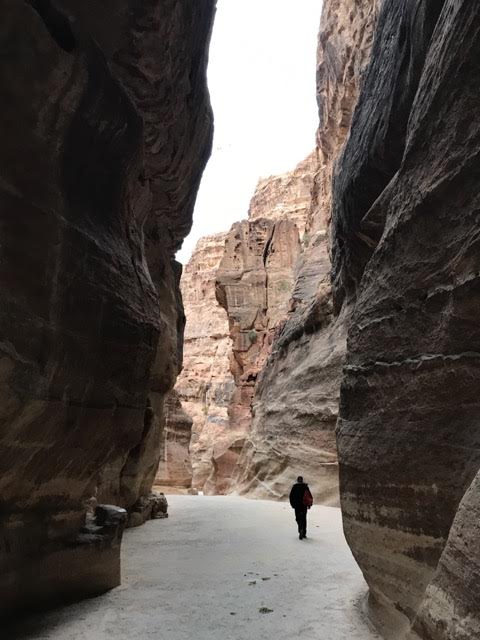
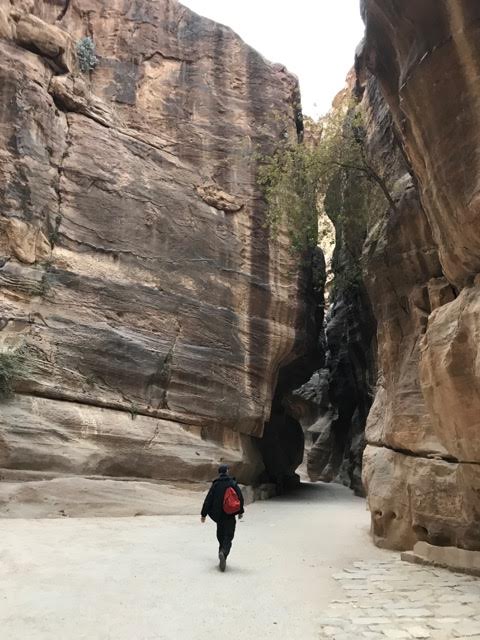
As we emerged from the Siq to the most famous view – that of The Treasury – our only companions were the Bedouin traders and their camels and donkeys. And so it remained for the next three hours, after which a few more visitors started to arrive. It was only as we left around 2.30 that large tour parties were in evidence – so if you ever go to Petra get there early.
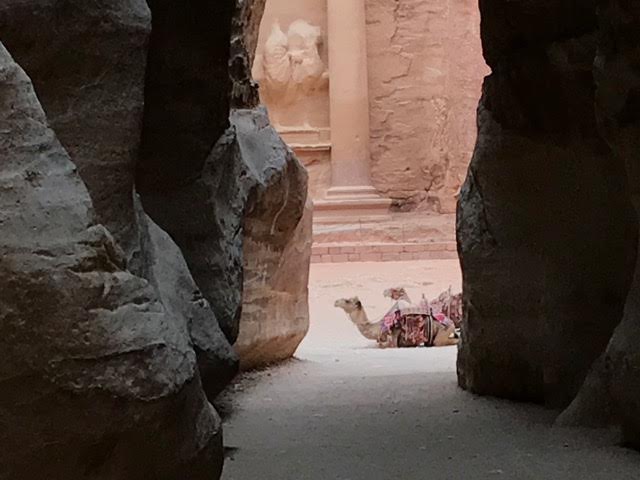
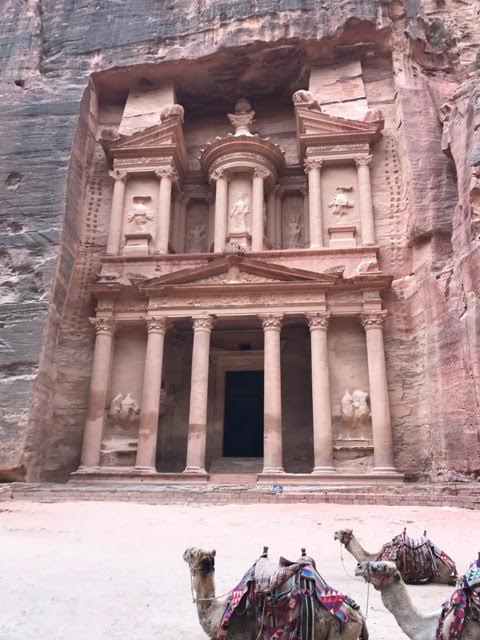
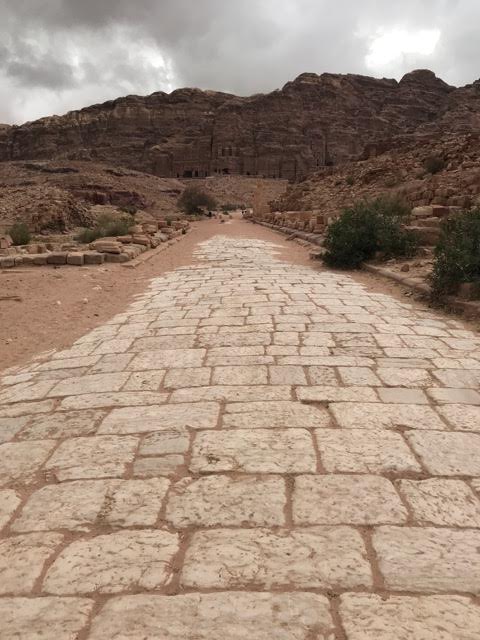
No one – in either direction
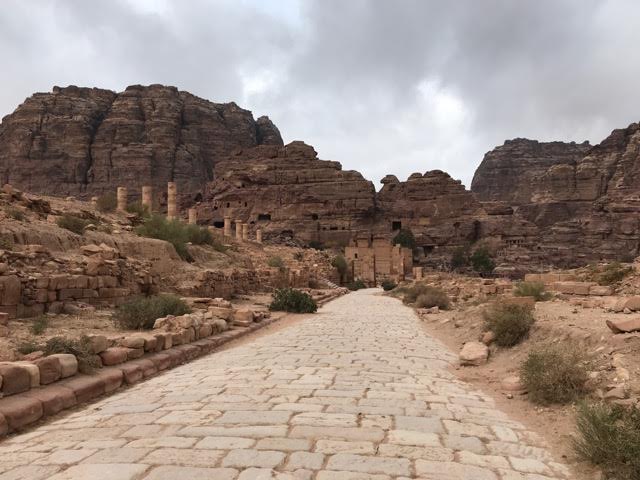
The architecture is what Petra is all about, but I did find some interesting plants. Thymelaea hirsuta (thanks #thephoenixgarden for identifying it) is a small shrub with tiny yellow flowers that has tough roots that will go up to 3.5metres deep in search of water. They were used to make strong ropes and paper. On a grander scale, there is a 450-year old pistachio tree alongside the Colonnaded Street. Presumably it once had companions, because pistachios are either male or female.
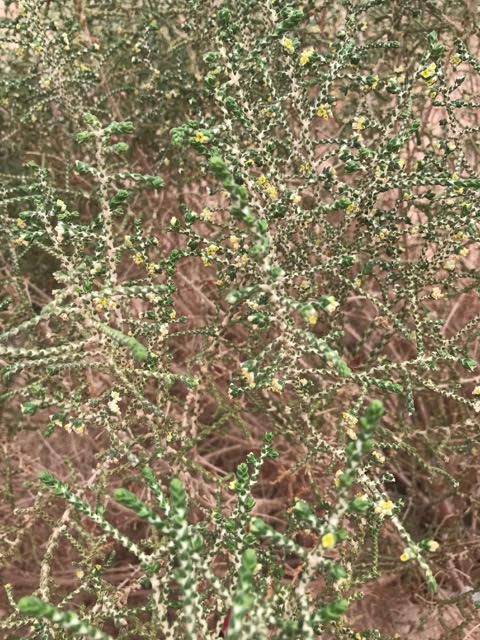
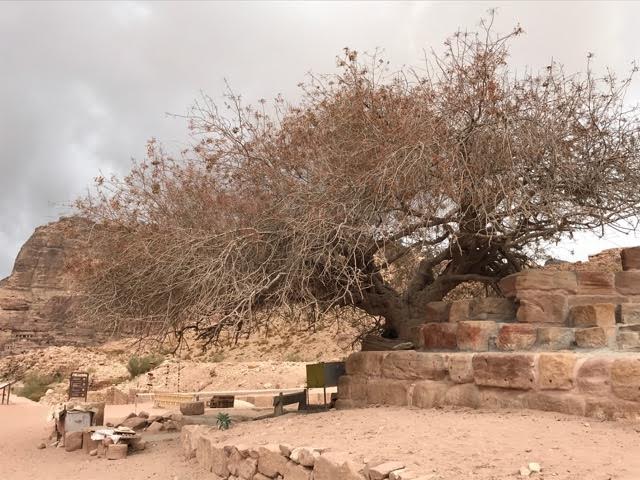
450 year old pistachio tree
The most common plant was the sea squill. This large bulb grows its leaves between November and March, so was easy to spot. The leaves then die back before it sends up tall flowering stems bearing white flowers in late summer and early autumn. I noticed some bulbs were being sold by the Bedouin, although I’m not sure why. They are quite toxic (the Bedouin use them to kill mice) and although they have medicinal uses, I’m not sure why anyone would buy them (unless they had a lot of mice!).
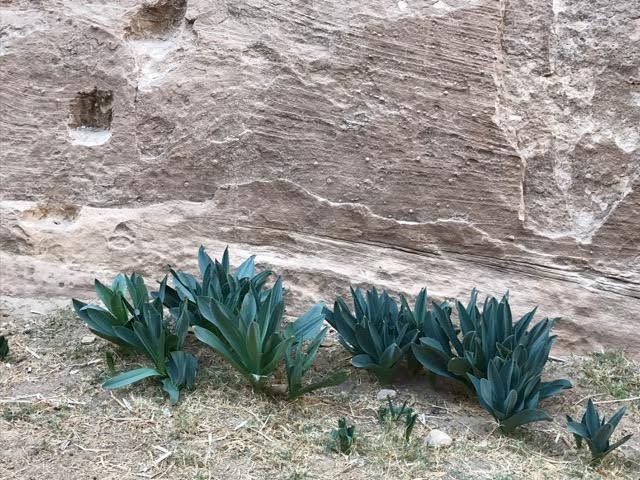
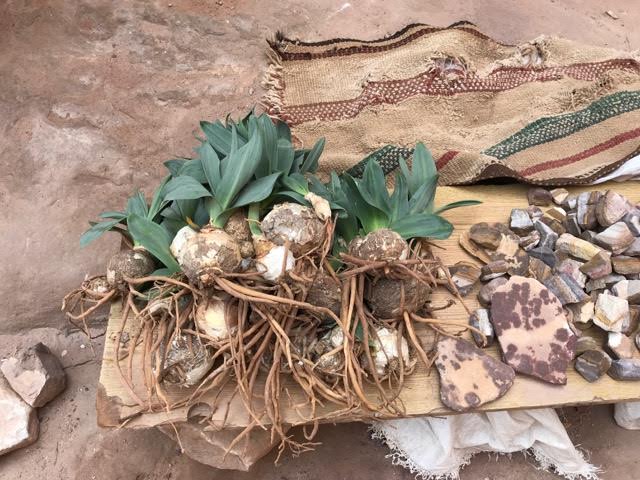
Walking away from the main paths, we followed a path down a narrow valley that led to a spring and found an olive grove and orchards still owned by the local tribes. Although the Bedouin were relocated from their cave houses in the 1980s, they still have the right to grow crops, tend their animals and sell trinkets to tourists within Petra. My most unexpected find was a clump of maidenhair fern growing out of the cliff near the spring.
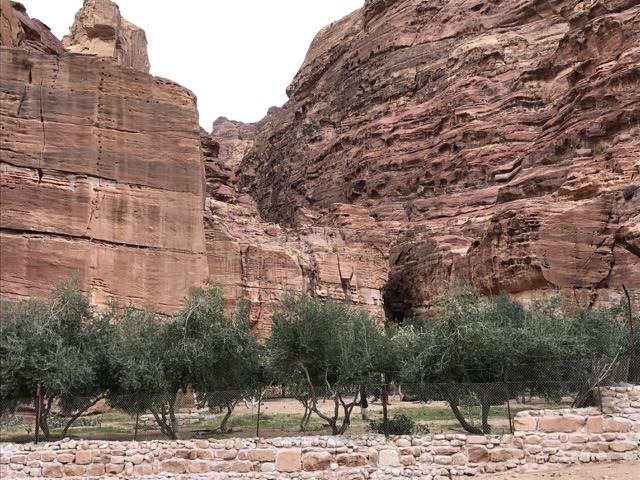

Orchard
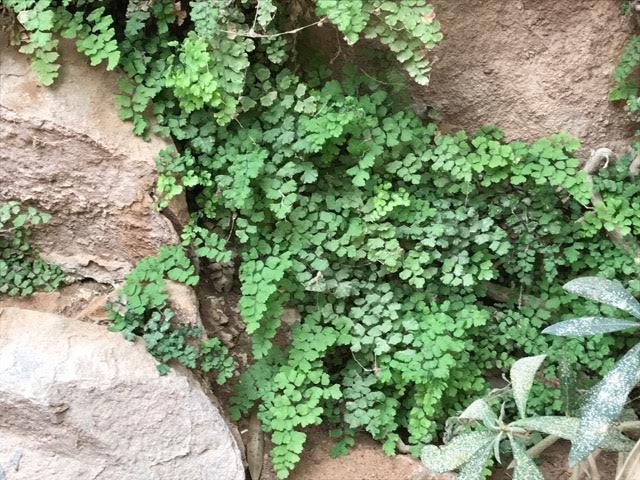
Maidenhair fern

The Monastery
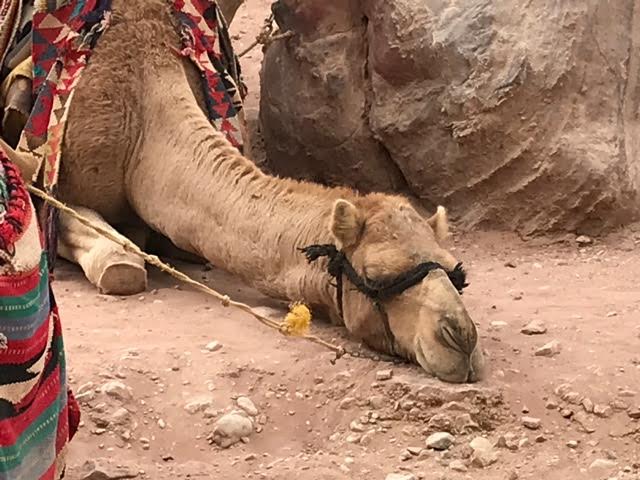
How I felt after the exertions of the day!
My advice to anyone who visits Petra is to go in the cool months, have tough walking boots or shoes and plenty of water. We walked for the entirety of our visit, including the 900 steps up the Monastery and the same back down (the donkey alternative looked very perilous) and by the end of the day my phone told me I had walked 19 kilometres and climbed up and down the equivalent of 104 floors. I slept very well that night!
Wadi Rum
Wadi Rum is the desert made famous by Lawrence of Arabia. It has a savage beauty and I am told that there are flowers to be found there in spring, but in December there was nothing to be seen apart from a few clumps of sea squill – and lots and lots and lots of sand. And the Seven Pillars of Wisdom – who knew it was a physical place as well as a book? Not me.
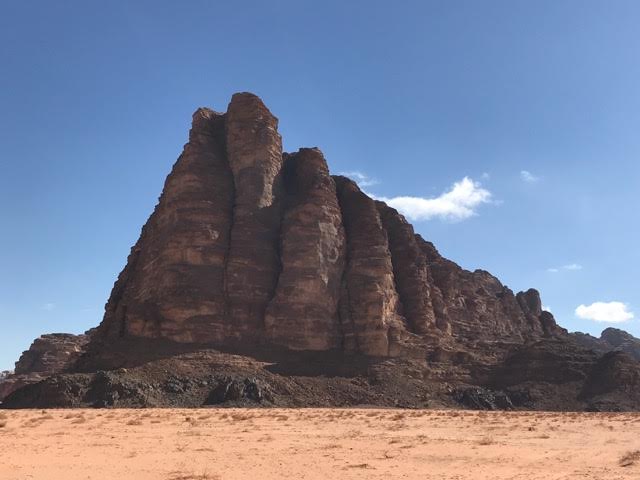
The Seven Pillars of Wisdom
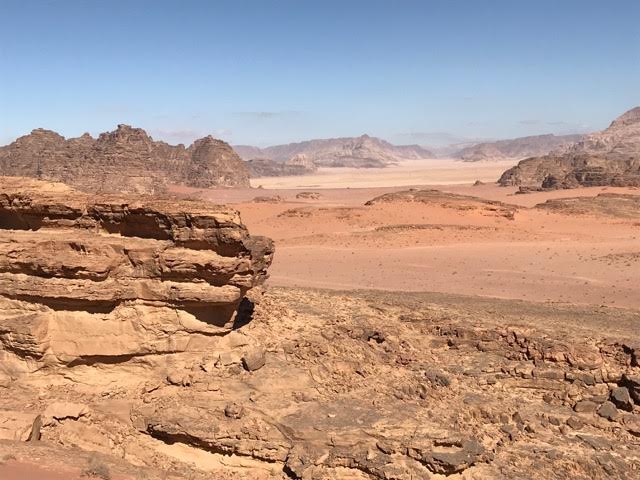
Aqaba
After the aridity of Wadi Rum it was wonderful to arrive in Aqaba on the Red Sea, with its abundance of sub-tropical plants – definitely more my sort of habitat! The planting round our hotel was very good with a mix of vibrant flowers and silver-leaved cacti and palms, but what really appealed most to me was the little plots of herbs planted in a strip that ran between the centre of the town and the beach. Usually prime land like this is sold off and developed – I hope it doesn’t happen here.

Cassia

Jatropha integerimma
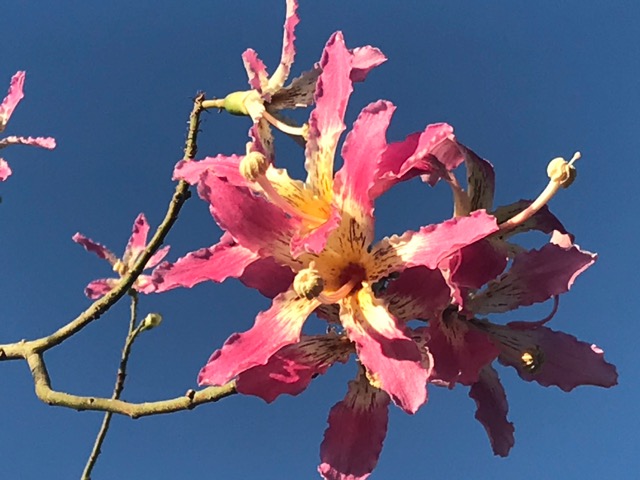
Floss Silk Trees
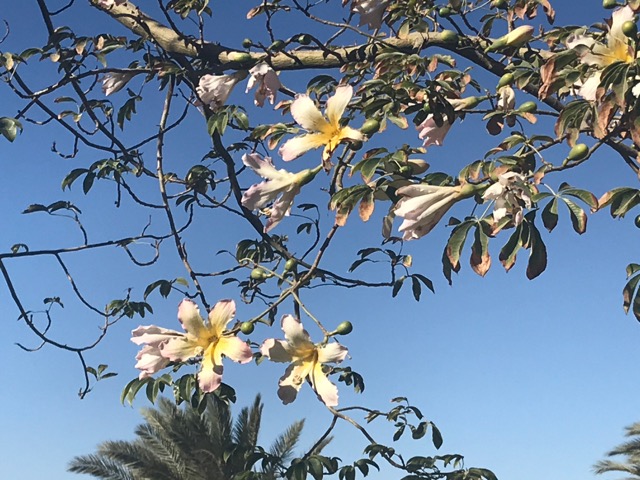
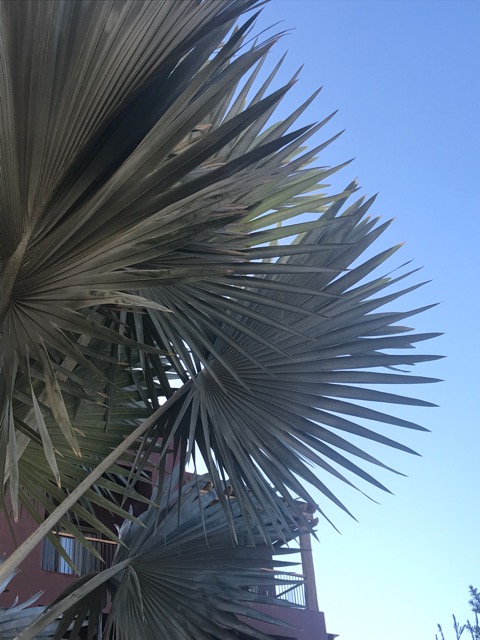
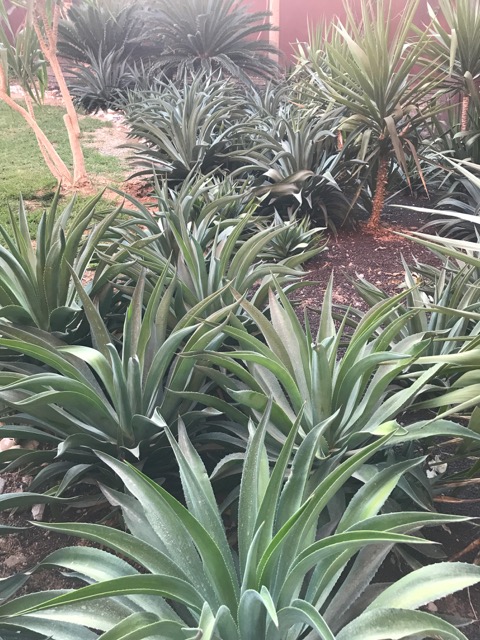
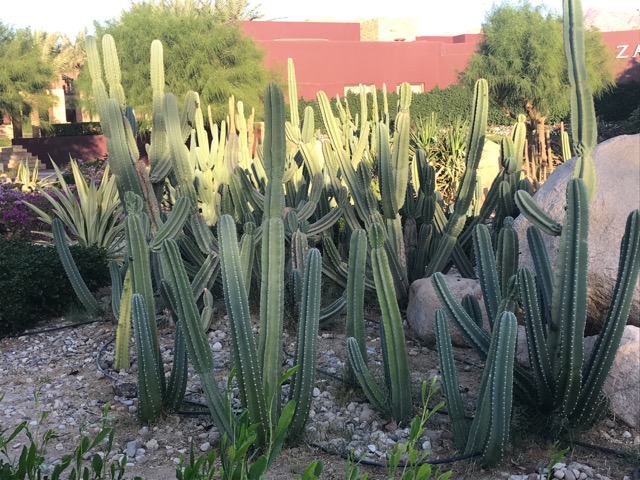


Plots of herbs growing next to the beach in Aqaba
The Souks
Both in Aqaba and Amman we visited the souks, bought herbs and spices and admired the fantastic array of fruit and vegetables – I would love to have brought some of them home too – especially the amazing aubergines – but common sense prevailed. I’ll just have to go back……….
